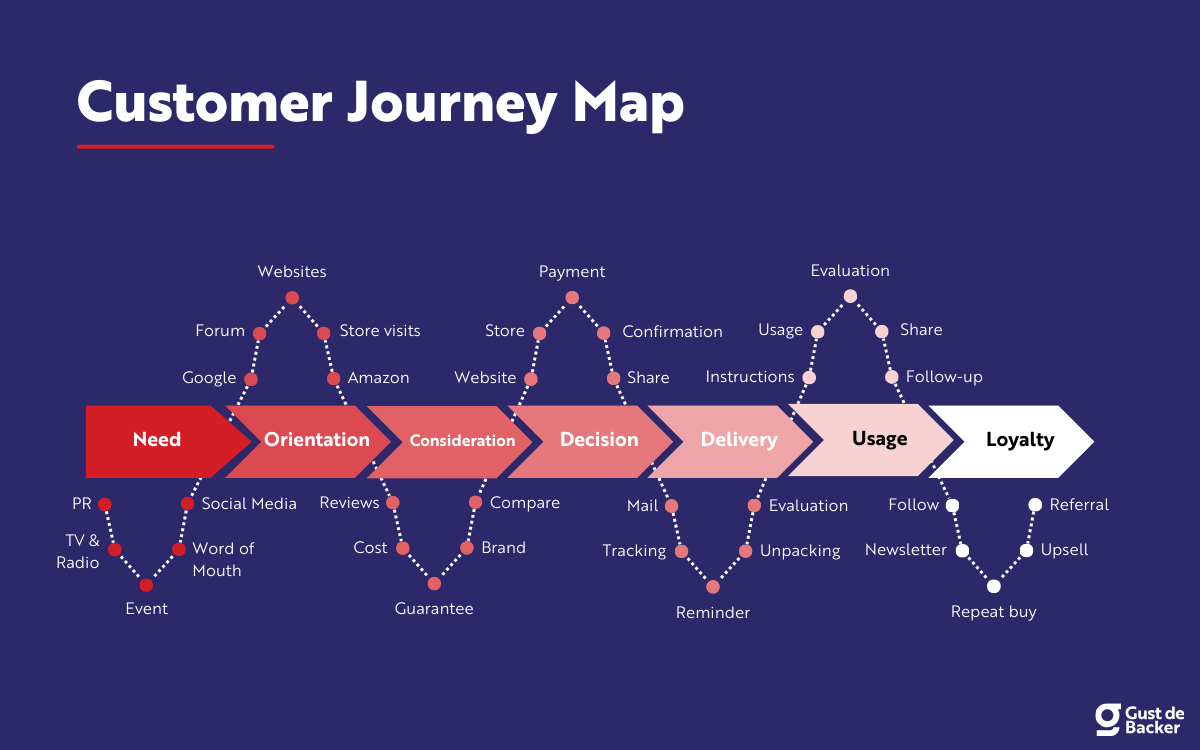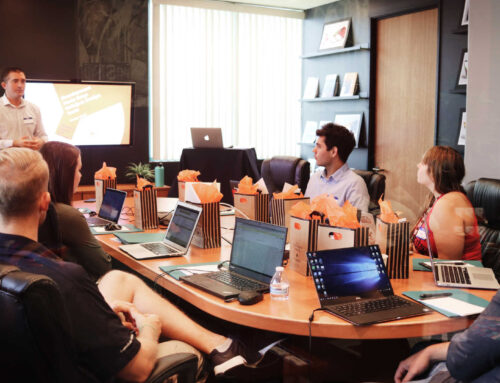The struggle is real. Converting website visitors into paying customers is a common challenge for every B2B SaaS company. Today’s buyers are distracted and bombarded with information. It takes a personalized experience recognizing their intent and motivation to move prospects through the sales cycle. Not only that, but they will click away at the first sign of friction.
SaaS form pages have low average conversion rates relative to other assets, converting an average of .02% of paid search visitors across industries. The upside is that you get a lot of data to work with to optimize for above-average results.
Mapping user intent, motivation, and friction at each stage of the customer journey is the key to improving your SaaS conversion rates and surpassing industry benchmarks.
Then, you can identify opportunities to streamline the sign-up flow, tailor content, and drive more leads through the conversion funnel.
Understanding the User: The 3 Conversion Buckets
Understanding user behavior is the bedrock of successful SaaS marketing. Let’s look at three key “buckets” that influence their actions and conversion rates:
1. Intent. What is the user’s goal when they land on your site? Are they researching a problem, comparing solutions, or ready to convert to a paying customer? Uncovering their intent allows you to deliver the most relevant information and calls to action (CTAs) to maximize trial conversion and, ultimately, paid conversion rates.
2. Motivation. What drives the user to take action? Is it a pressing pain point, a desire for efficiency gains, or the promise of a competitive edge? By pinpointing their motivations, you can craft messaging that resonates and moves them forward in the sales process.
3. Friction. While we can make educated guesses about intent and motivation, friction in the funnel quickly becomes painfully obvious. The good news is that it has a tangible fix. What obstacles hinder the user’s progress and potentially increase the churn rate?
Are there confusing forms, unclear value propositions, a slow-loading page, or a glitchy credit card payment process? Identifying friction points is essential to streamlining the user experience and maximizing conversion rates throughout the funnel.
In the next section, we’ll explore leveraging these “buckets” to map the customer journey and unlock reasonable SaaS conversion rates.
Mapping the Customer Journey for SaaS Success
While the customer journey describes a prospect’s experience at each stage of interacting with your brand, a journey map visually represents the user’s intent, motivation, and friction at each touchpoint.
This map allows you to identify areas for improvement and personalize the user experience for better conversions.

Here’s a breakdown of how to create a user journey map that considers all three buckets and impacts conversion optimization:
1. Define Your Buyer Personas
Start by segmenting your audience into buyer personas. Each persona represents an ideal customer with distinct characteristics, goals, and pain points.
2. Outline the Customer Journey Stages
Map out the key stages users typically navigate, from initial awareness to final conversion (e.g., landing on your website, browsing product pages, requesting a demo, signing up for a free trial, and ultimately becoming a paying customer).
3. Plot User Intent, Motivation, and Friction at Each Stage
For each stage, crunch the data to determine the user’s intent and motivation to see where friction exists.
- Intent. What information are they seeking? What problem are they trying to solve?
- Motivation. What drives them towards a free trial or paid conversion? What are their hopes and anxieties?
- Friction. What obstacles might impede their progress? (e.g., complex navigation, lack of social proof, lengthy forms, or a confusing sign-up process)
Optimizing Your SaaS Funnel: Addressing User Intent, Motivation & Friction
Now that you have a framework for mapping the user journey, let’s explore actionable strategies for optimizing each stage based on intent, motivation, and friction to achieve reasonable conversion rates:
Awareness Stage. Here, users are just beginning to identify their problem. Examples of content for this stage include:
- Informative blog posts
- Industry reports
- Targeted ads that resonate with their initial pain points
For example, offer blog posts with titles like “5 Signs You Need a [Your SaaS Solution]” or infographics that showcase industry benchmarks. Keep sign-up forms for downloadable content short and require minimal information to minimize friction.
Use CTAs like “Download our Free E-book” or “Watch our On-Demand Webinar” to nurture leads and capture email addresses for further marketing automation.
Highlight your SaaS solution’s benefits and spark their motivation by showcasing success stories and social proof to convert them into leads.
Consideration Stage. Users are actively researching solutions. Content for the consideration stage includes:
- Detailed product pages
- Comparison charts
- White papers that offer a deeper dive into your offerings.
For example, create in-depth product pages that highlight key features and benefits. Utilize case studies that address specific customer pain points and showcase the positive impact of your SaaS product.
Motivate them by showcasing unique features and addressing their specific needs through targeted CTAs like “Start Your Free Trial” or “Request a Demo” to encourage deeper engagement and trial sign-ups.
Minimize friction by ensuring a user-friendly website with straightforward navigation and easy access to valuable resources like case studies that showcase customer success. This path can help guide users toward a free trial conversion.
Decision Stage. Users are comparing vendors and nearing a buying decision. Address their intent with content such as:
- Case studies
- Customer testimonials
- Free trials that showcase the value proposition.
Showcasing customer testimonials and success stories helps quantify the return on investment (ROI) your SaaS solution can help them achieve. Emphasize the ROI and address any lingering concerns to bolster their motivation and nudge them towards a paid conversion.
Reduce friction by streamlining the sign-up process with pre-filled forms, multiple payment options, and transparent pricing structures.
Retention Stage. Even the most highly optimized sales funnels will not matter if your customers ask for refunds or your customer acquisition costs are too high. You can decrease attrition and increase upselling with content such as:
- Onboarding information
- How to Get Started Videos
- Special thank you email with a coupon for next purchase
Remember to look at your results within the Customer Lifetime Value (CLTV) context: Calculate the total recurring revenue a customer generates over their relationship with your company. This value helps you understand the long-term value of your customer base.
Minimizing Friction Throughout the Customer Journey
Friction is a rich area for improvement because you have more control over your website experience than your prospect’s intent and motivation.
Some areas to optimize to create a frictionless customer journey include:
Website Speed. Ensure your website loads quickly on all devices to avoid user frustration and abandonment.
Clear Navigation. Make it easy for users to find the information they need with a user-friendly site structure.
Mobile-Responsiveness. Optimize your website for a seamless user experience across all devices, including smartphones and tablets.
Compelling CTAs. Use clear and concise CTAs that align with user intent at each stage to guide them toward the desired action.
Streamlined Forms. Minimize form fields and only request essential information during sign-up to reduce friction.
Multiple Payment Options. Offer a variety of secure payment methods to accommodate user preferences and prevent cart abandonment.
Live Chat Support. Provide real-time assistance to address user concerns and answer questions promptly, improving the user experience.
Conclusion: The Power of User-Centricity
As you can see, understanding user intent, motivation, and friction is the cornerstone of successful SaaS marketing. By leveraging FunnelEnvy’s framework for customer journey mapping, you can gain valuable insights into your audience’s needs and tailor the user experience for optimal conversions.
Tracking the data for this process can seem daunting. As you know, AI tools are now adding new levels of performance and complexity.
Our FunnelEnvy customer data platform enables you to create a personalized experience that responds to your website visitors within milliseconds. Reach out today to get the conversation started.






